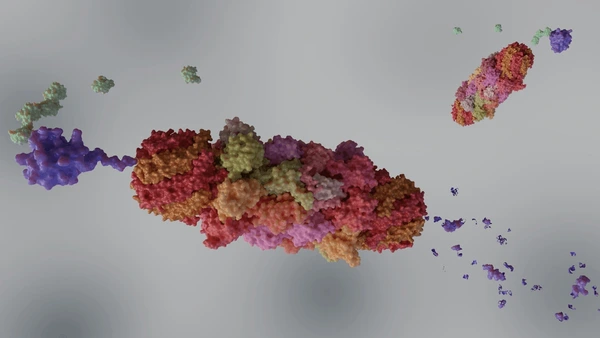Protein Glycation and Aging: Understanding Its Role as a Biomarker

Protein glycation, often referred to as the Maillard reaction occurs when sugar molecules bond spontaneously to proteins without the aid of enzymes. This reaction forms advanced glycation end products (AGEs), which accumulate in the body over time. AGEs can affect nearly every type of cell and molecule in the body and are linked to several age-related diseases.
What is Protein Glycation?
Protein glycation involves sugars attaching to proteins, forming harmful compounds known as AGEs. These compounds are particularly detrimental because they can cause structural and functional changes in various tissues. As people age, the accumulation of AGEs increases, contributing to cellular and tissue damage which is characteristic of the aging process.
The Impact of Glycation on Aging
The accumulation of AGEs significantly influences the aging process. In diabetes, AGEs contribute to the dysfunction in insulin action and glucose metabolism. In the cardiovascular system, glycated proteins can make blood vessels stiffer and more prone to atherosclerosis, leading to increased heart disease risk. Similarly, in the brain, AGEs can accumulate and contribute to the development of neurodegenerative diseases like Alzheimer’s. The kidneys also suffer from the effects of glycation, as it can damage proteins essential for kidney function, leading to conditions such as nephropathy.
Assessing Glycation as a Biomaker
Glycated hemoglobin (HbA1c) is a well-known biomarker used to assess average blood glucose concentration over several months. It provides a useful measure of the degree of glycation occurring in the body and is extensively used to manage and diagnose diabetes. Elevated levels of HbA1c suggest higher amounts of glycated proteins, indicating greater oxidative stress and inflammatory potential within the body.
Strategies to Minimize Glycation
To minimize glycation and reduce AGEs accumulation, reducing sugar intake is crucial. Less sugar in the diet means fewer substrates available for glycation. Incorporating antioxidants through diet can also help protect tissues from the oxidative conditions that promote glycation. Additionally, adopting cooking methods that use lower temperatures and more moisture can reduce AGEs formation in food.
The relationship between protein glycation and aging highlights the importance of lifestyle and dietary choices in moderating the effects of aging. By understanding and addressing the factors that influence glycation, individuals can take meaningful steps toward enhancing their health and longevity.
References
- Singh, R., Barden, A., Mori, T., & Beilin, L. (2001). Advanced glycation end-products: a review. Diabetologia, 44(2), 129-146.
- Semba, R. D., Nicklett, E. J., & Ferrucci, L. (2010). Does accumulation of advanced glycation end products contribute to the aging phenotype? Journal of Gerontology, 65(9), 963-975.
- Goldin, A., Beckman, J. A., Schmidt, A. M., & Creager, M. A. (2006). Advanced glycation end products: sparking the development of diabetic vascular injury. Circulation, 114(6), 597-605.

